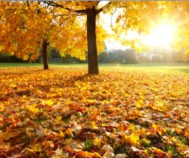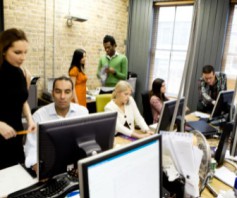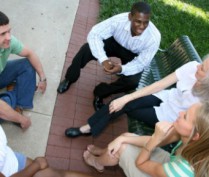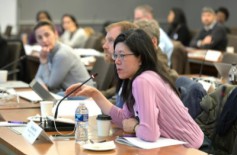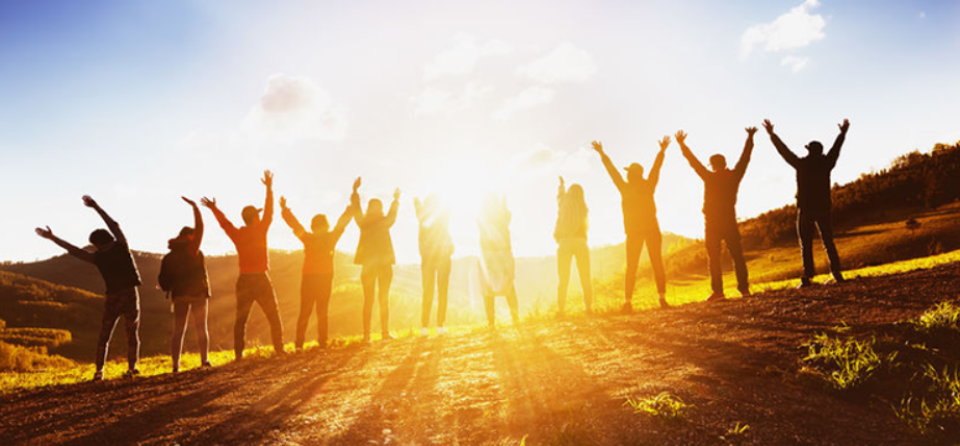
Learn about climate change by reading a five minute article.
STEP 2: GET KNOWLEDGE
RECORDED WEBINAR: Reducing Your Carbon Footprint -- Electric Vehicles
- Benefits and Challenges to Purchasing an Electric Vehicle. Doug Oliver, Ford Motor Company
- How Ann Arbor is Changing to Accomodate Electric Vehicles. Simi Barr, City of Ann Arbor Office of Sustainability and Innovations
- Roundtable on Advice from Electric Vehicle Owners
- Carlene Colvin-Garcia, Clean Mobility Consultancy
- Lisa Lemble, First Unitarian Universalist Congregation of Ann Arbor
- David Lewis, Temple Beth Emeth
- Roundtable Moderator: Sandy Simon, First Unitarian Universalist Congregation of Ann Arbor
Workshop host: Bill Parkus, Temple Beth Emeth
Recorded November 16, 2022
Click here to access the recording and the chat discussion.
RECORDED WEBINAR: Reducing Your Carbon Footprint-- Heating and Cooling
-
Status of Conversion to Renewable Source Electrical Generation from Fossil Fuels in Michigan. Brian Rich, Consumers Energy
-
Perspectives from Residential Owner of Alternative Heating/Cooling. Ed Lynn, First Unitarian Universalist Congregation of Ann Arbor
Workshop host: Bill Parkus, Temple Beth Emeth
Recorded December 14
Click here to access the recording.
RECORDED WEBINAR: Reducing Your Carbon Footprint -- Solar Energy Systems
- The Costs and Benefits of Installing Solar in Your Home; Steps Involved. Murray Rosenthal, Temple Beth Emeth
-
Incentives and Infrastructure for Solar in Ann Arbor. Julie Roth, City of Ann Arbor.
Solar System Options; How Solar Systems Work. Larry Kerber, Homeland Solar.
- Homeowner Perspective. David Gitterman, Temple Beth Emeth
Workshop host: Cathy Marshall, Temple Beth Emeth
Recorded January 18, 2023, 7:30 - 9:00 p.m.
Click here to access the recording.
RECORDED WEBINAR: Reducing Your Carbon Footprint -- Individual Behavior Choices and Climate Anxiety
- Recognizing and Dealing with Climate Anxiety. Laura Robinson, Clinical Psychologist
- Individual Behavior Choices and Changes You Can Make. Leah Wiste, Michigan Interfaith Power & Light
Workshop host: Marcy Plunkett, Temple Beth Emeth
Recorded April 19, 7:30 - 9:00 p.m.
Click here to access the recording.
EVERYTHING YOU NEED TO KNOW ABOUT CLIMATE CHANGE IN FIVE MINUTES
Carbon dioxide is one of a set of so-called greenhouse gases. They get this name because they let sunlight in, but won’t let heat back out into space, keeping the Earth warm, acting a bit like a greenhouse.
We want some of this effect. Without it, Earth would be a lot colder. The problem is that human activities — especially over the last few centuries — have increased greenhouse gas emissions to a point where it’s dangerous.
The reason everyone focuses on carbon dioxide is simply because we modern humans produce so much of it, making it the largest greenhouse gas. This is partly due to burning fossil fuels, but it’s also because land-use changes like deforestation generate carbon dioxide emissions. And we cause significant methane emissions too from activities like agriculture — it’s not just carbon dioxide.
When people talk about a degree or two increase in temperatures, it might sound ok. It could even sound nice if you live in a cold country. But this is increase in global average temperatures, it’s not the same as it being a bit warmer on a sunny day.
The term ‘greenhouse’ might be a bit misleading. It’s not that cozy, or quite so optimal for life to flourish in.
As ice melts, sea levels rise — coastal communities are already reporting this as quite obvious. Fresh water will be less plentiful. Ecosystems will change, with many species becoming extinct and food chains put at risk. Parts of the world can expect extreme heat waves, drought and wildfires. We can also expect increased rainfall in some places, causing floods. Hurricanes will become stronger. At times and places it’ll be much warmer, for others it will just be very cold and wet, and they may possibly be hungry and thirsty.
This is a nice question because it lets us show off the clever-ness of humans.
We have great data for the last few decades because, back in 1958, a visionary scientist named Charles David Keeling started continuous measurements of concentration of carbon dioxide in Earth’s atmosphere from an observatory in Hawaii.
Today this work is continued by his son Ralf, and it’s known as the Keeling Curve. Keeling after the scientists, and Curve because it is quite clearly going up. You can follow it on Twitter @keeling_curve.
But if we want to know how much carbon dioxide was in the atmosphere before the 1950s we have to engage in a bit of super-sneaky scientific time travel. Researchers use something called ice cores — long cylinders of ice drilled out of glaciers in Antarctica and Greenland. The deeper parts of these cores include tiny bubbles of air from centuries past, preserved in the ice, time cables of the atmospheres of our ancestors. They can then run chemical analysis on these air bubbles to give us empirical evidence of how greenhouse gas concentrations have changed over the last millennia. It’s from ice cores that we know that the concentration of both carbon dioxide and methane was relatively stable up until the start of the 19th century, and then rose rapidly.
Human ingenuity might be what caused a lot of this problem, but it’s also what’s letting us see it in time to tackle it too.
We can’t just stick a thermometer under the Earth’s armpit, but scientists do just take it’s temperature, via thousands weather stations spread all over the planet. They check the temperature on land, but also test sea temperature using ships, and satellites and weather balloons measure temperature higher up too.
We have detailed temperature records from the middle of the 19th century. To get earlier data, researchers look for markers in nature to get a sense of how temperature’s changed over time.
Chemical analysis of ice cores are useful here too, just as they are for carbon concentration, as well as the width of tree rings, and using boreholes to measure a thermal ‘imprint’ of temperatures
of the past buried deep below ground. We can also look for clues in new phenomena like sea level rise, rising humidity and plants flowering earlier in the year.
We’ve had the bones of a theory for anthropogenic global warming since 1930 or so.
The idea of the greenhouse effect dates back to the 1820s and French physicist Joseph Fourier. In 1861 Irish physicist John Tyndall identified the gases that could cause such an effect, including carbon dioxide.
Then in the 1890s Swedish chemist Svante Arrhenius calculated that cutting carbon dioxide in the atmosphere could lower the temperature in Europe. He’d just been thinking about natural phenomena like trees and oceans absorbing carbon dioxide, but a colleague, Arvid Högbom, suggested he consider factories too. As scientists of the time remarked, we were ‘evaporating’ coal mines into the air.
In the 1930s, Guy Callendar — an engineer by profession, but a keen meteorologist in his spare time — used weather stations’ records to show that temperatures had risen over the previous century. He also noted the increase in carbon dioxide concentrations over the same period, and suggested a link.
We’ve supplemented this with a lot more detail and evidence since, but the basic tenets are pretty old.
It depends on how hot you are willing for it to get. For the last decade, scientists have compiled annual global carbon budgets to give a sense of how much more carbon dioxide we can put up there in the atmosphere and stay within two degrees warming.
According to the 2014 budget — published last September — emissions from fossil fuels and deforestation are set to reach 40 billion tonnes, the largest amount in human history, and our ‘quota’ will be easily used up in a generation.
A paper published at the start of this year by UCL’s Christophe McGlade and Paul Ekins argued that a third of oil reserves, half of gas reserves and over 80% of current coal reserves globally should not be used before 2050 if global warming is to stay below that two degree target.
No. Not for everyone, no. But everyone has sort of settled on it as a target of sorts (a weird target, as very few people actually want to hit it). In the last century, there were a range of ideas about what ‘dangerous’ climate change might look like. But two degrees won over, even though it still condemns a lot of people, non-human species and places.
They were slightly slower than the scientists in noticing, but they’ve been at it a while too. Attempts at action on climate change are older than you might think.
1972 saw the first UN environment conference. Climate change didn’t have a starring role, but it was there and the conference led to the establishment of the United Nations Environment Programme. This, in turn, established the Intergovernmental Panel on Climate Change (IPCC) in 1988 — a massive undertaking which collects and summarises advice from scientists.
In 1992, the United Nations Framework Convention on Climate Change (the UNFCCC) was established at the Rio Earth Summit. It’s formally a treaty, but doesn’t contain anything legally binding and is more a system for negotiating the issue. Looking through the history of UNFCCC meetings, you could be forgiven for saying that’s all they’ve done — negotiate. But they’ve tried out policy ideas, set up projects, worked through arguments, helped popularise the issue, offered spaces to forge alliances and there’s hope that we might see something finally in Paris at the end of this year.
There’s basic things like changing lightbulbs, swapping to a flexitarian diet, being conscious about energy efficiency in your home and thinking more carefully about your travel options. That’s all important — our individual actions add up — but a lot of what we need to do on climate change takes collective action, with a focus on changing social, economic, political, cultural and built infrastructure.
Register to vote, and ask your politicians what they’re doing about climate change. Ask questions of the companies you buy products from too. Simply chat about climate change with your friends and families too. Because we need to unlock the way its been allowed to become an issue we avoid, shove under the carpet or leave for tree-huggers.
Learn about climate change and talk about it, let an awareness of the issue become part of how you work through the world. Get used to it. Because it’s here.
Climate change is more a matter of mitigating losses than simply winning a fight. And that’s part of what makes it hard. Still, just look at how much of the world we could avoid losing if we act. There’s a lot of hope there. And many people are already taking positive actions. Even if we’re not doing enough yet, there’s a lot we can do.
Alice Bell https://roadtoparis.info/2015/05/18/everything-you-need-to-know-about-climate-change-in-five-minutes/
